A Port Primer: Do You Know Your Ruby from Your Tawny?
Why Port Wine and Choosing a Favorite Style
Port wines are relatively unknown to many wine consumers, which is a shame. They aren’t in the popular dry wine, low alcohol category, but they have so much to offer. Port wines are sweet and they are fortified to a level of 19-22% abv. They are perfect after a meal, even in lieu of dessert. Though higher in alcohol, the typical pour is only 3 oz, not excessive and ports are full of flavor. Ports hail from a time when wine transportation involved long sea voyages without any refrigeration, so fortification made sense to preserve wine quality. Finally, most ports will hold their quality for many weeks after opening, so you can enjoy them at leisure. Dow’s LBV Port label suggests consuming the port within 6-8 weeks of opening, no hurry!



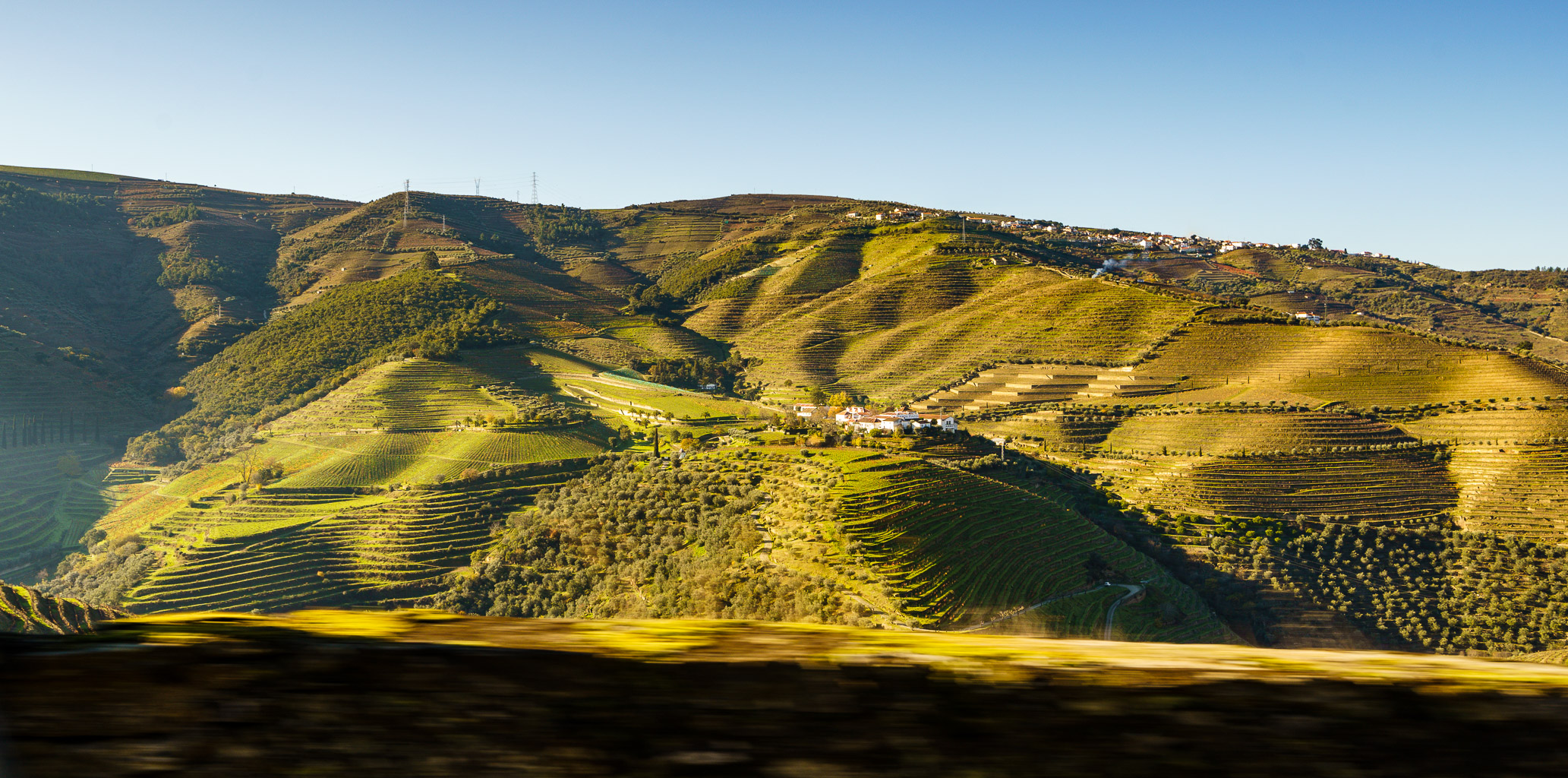

The Home of Port Wine
Port wines come exclusively from the Douro river valley in Portugal. The city of Porto was established as the shipping center and home of the Port houses. The grapes are grown upriver, separated from the ocean influence by a coastal mountain range. The Douro river valley has a warm continental climate with hot summers and surprisingly cold winters. The dramatic slopes alongside the Douro river are the site of the vineyards. The main grapes for Port are Touriga Franca, Tinta Roriz, Tinta Barroca, Touriga Nacional and Tinto Cão.
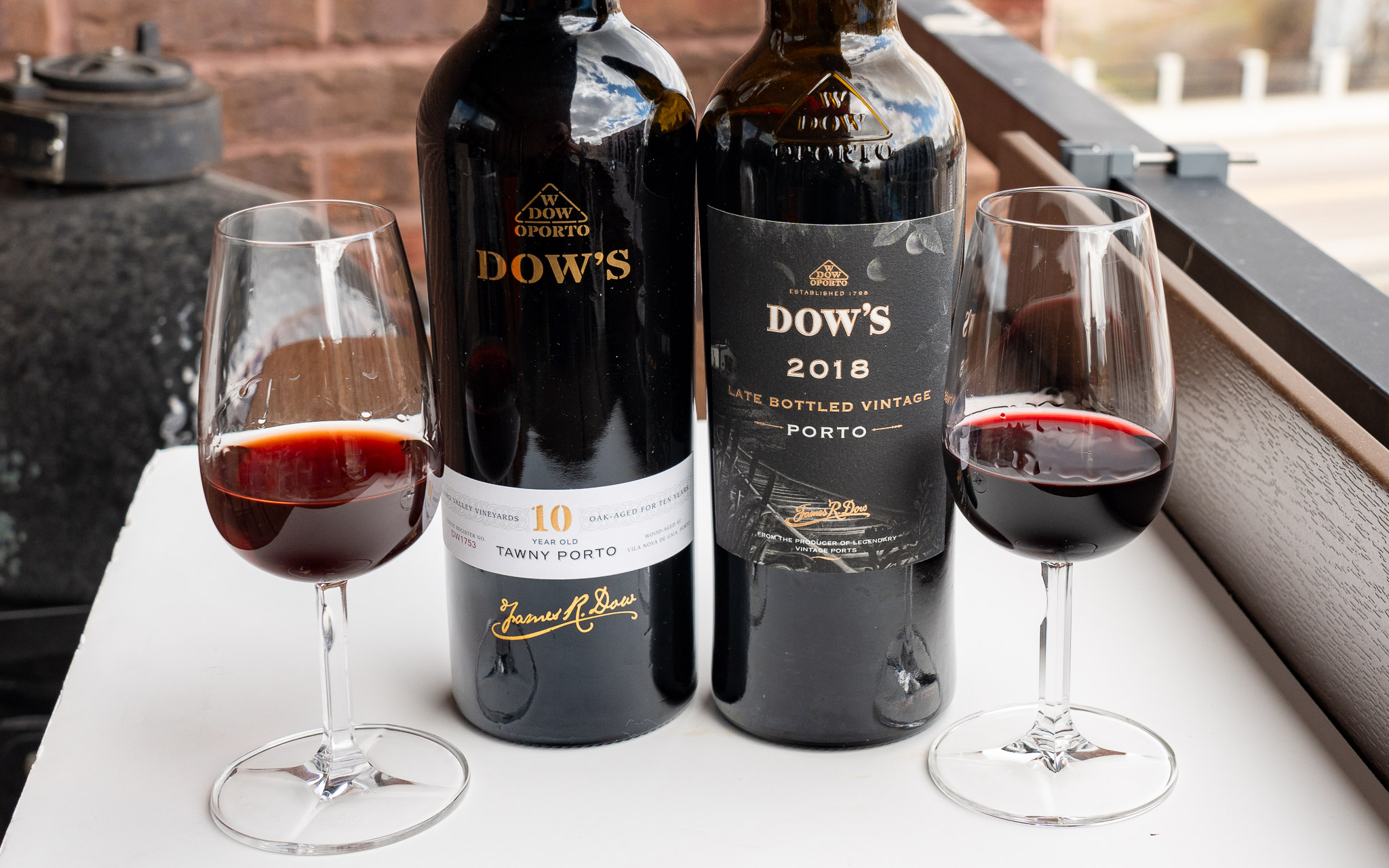

Port Wine Production
With the hot summers, grapes develop thick skins and high sugars leading to intense wines with lots of color. In the fall, grapes are harvested and fermented in shallow troughs called lagares. To extract color and flavor, the grapes are traditionally foot stomped vigorously. Before fermentation is complete, a neutral spirit is added to the fermenting wine. The elevated alcohol kills the yeast, stopping the fermentation while the wine is still naturally quite sweet. At the conclusion of fortification, all port wines are essentially the same: deep in color with rich fruit flavors. Selections from better vineyards will have higher quality potential, more intense flavors, of course. Here, the two families – Ruby and Tawny diverge.
Ruby ports are aged for just a few years in very large wooden tanks, then they are bottled. Vintage dated ports represent the pinnacle of quality, they are bottled unfiltered and can easily be aged for thirty years, improving along the way. Lesser ruby ports are bottled after several years and may be a blend of vintages or single vintage. They may be filtered before bottling and are ready to drink or left unfiltered to allow further aging. Ports in the ruby family retain their deep color and intense fruit flavors while acquiring classic signs of maturation in the bottle.
Tawny ports are aged in 600 liter barrels called “pipes”. These barrels have been used for many years, so they allow slow oxidative aging without imparting oak flavors in the wine. Over time in barrel, tawny ports lose their deep color, the fruity flavors fade and oxidative flavors take over – flavors like butterscotch, caramel, nuts. Tawny ports are typically blended in age indicated versions. 10 year tawny port is blended to present a flavor profile of a port aged for 10 years, though the bottle may have components that are somewhat younger and even much older, to add character.

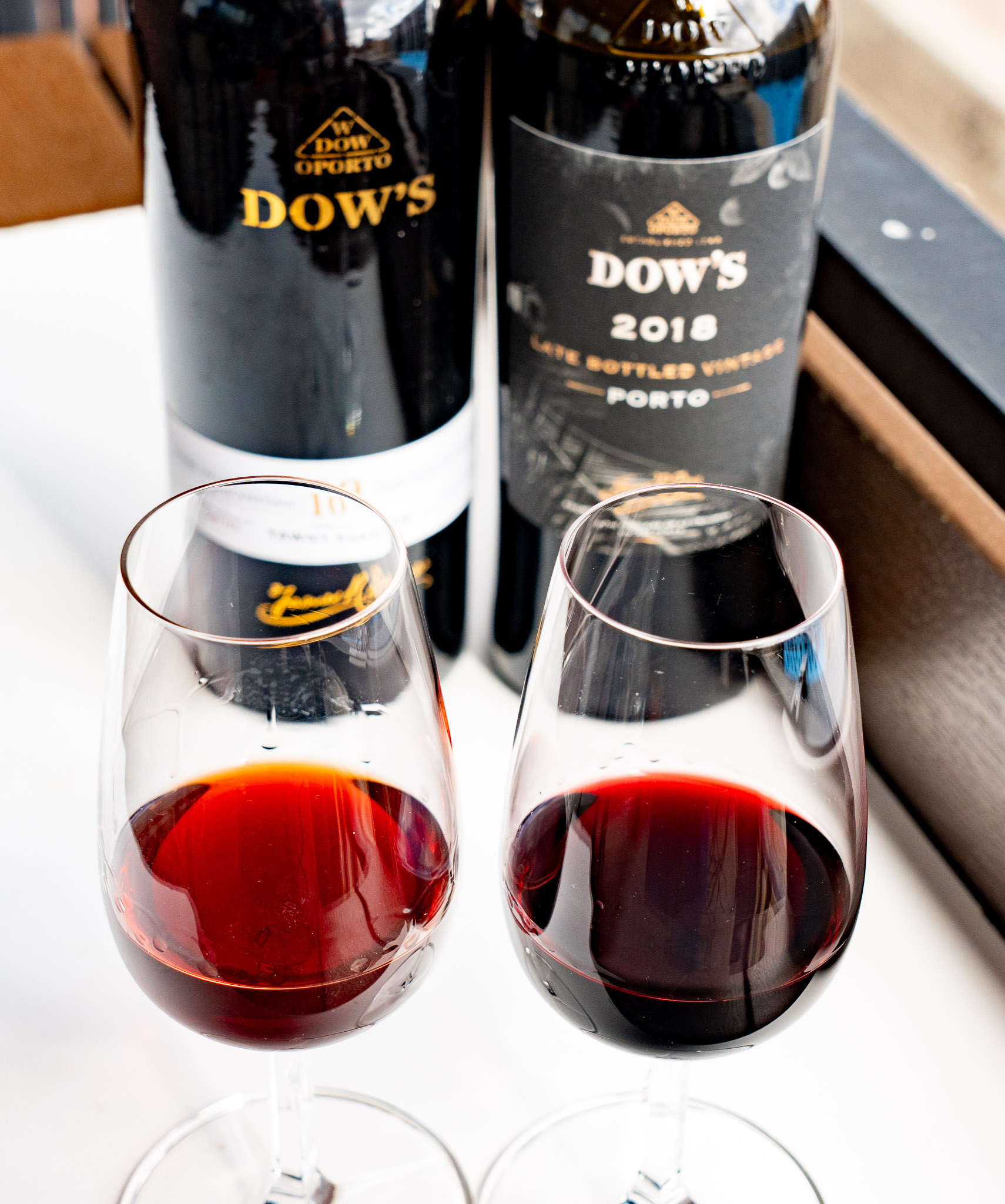

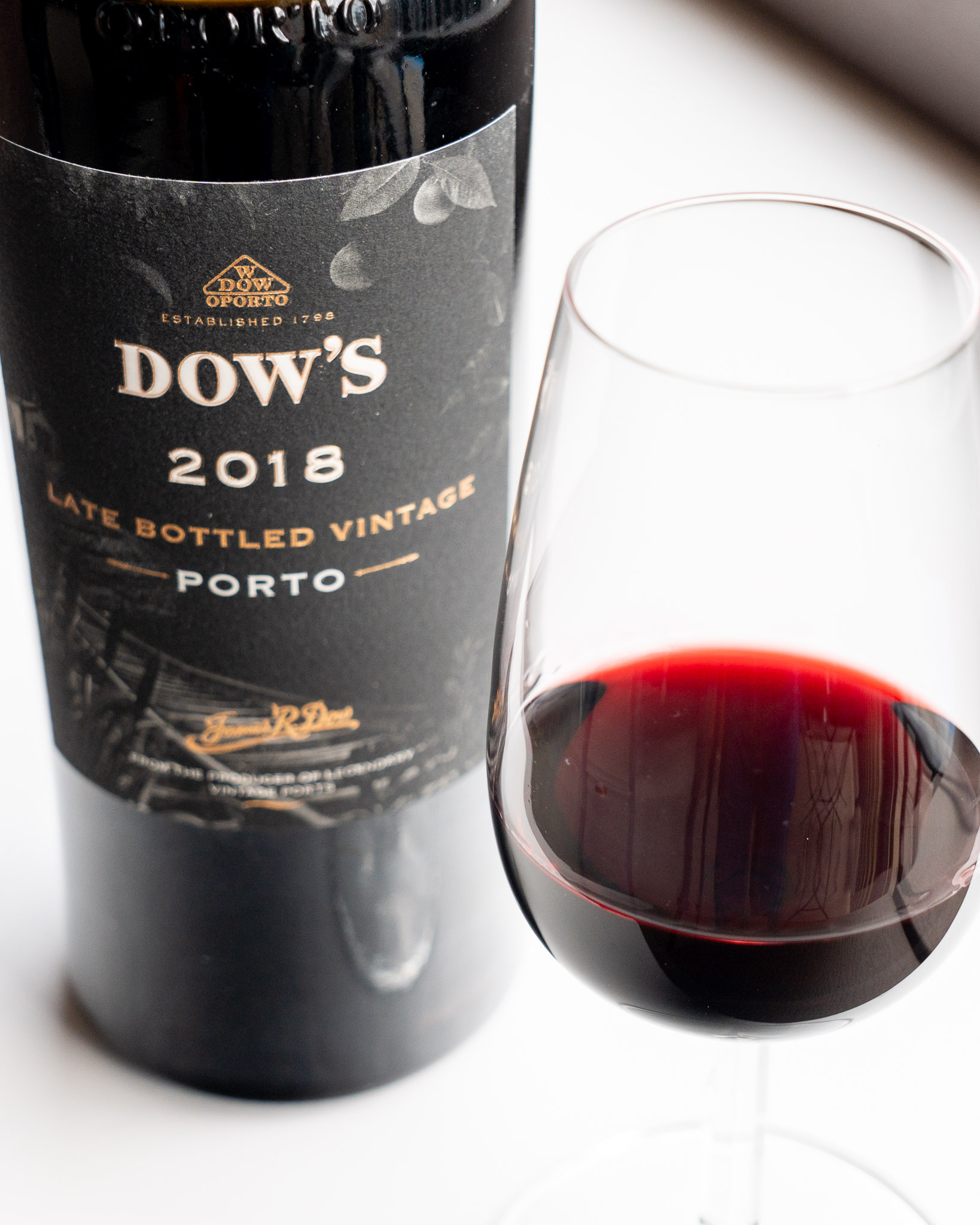
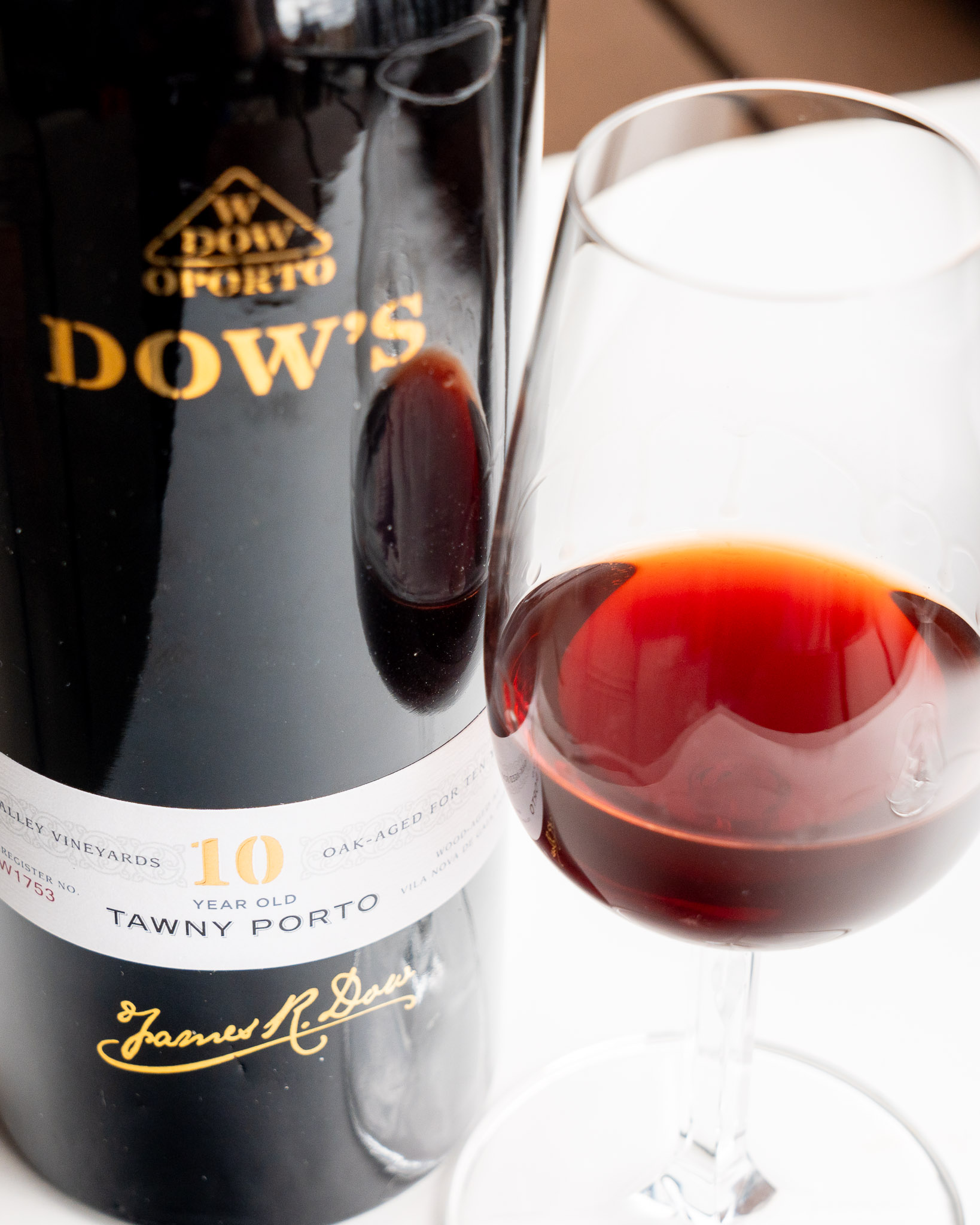
Are You Team Ruby or Team Tawny?
The Ruby Port family is for the person who loves deep, ripe, pure fruit flavors. Ruby ports exist at a variety of price points and quality levels and enthusiasts have favorites for everyday and special occasions. The Tawny Port family is for the person who loves those oxidative flavors and aromas. There are some fruity remnants, but Tawny Ports are full of flavors of nuts, butterscotch, caramel, Note that you do NOT need to pick a side! You can love both.
Disclosure: The Dow’s 10 Year Tawny Port was provided as a sample. I purchased the Dow’s LBV at retail. No other compensation was offered, all opinions expressed are mine.
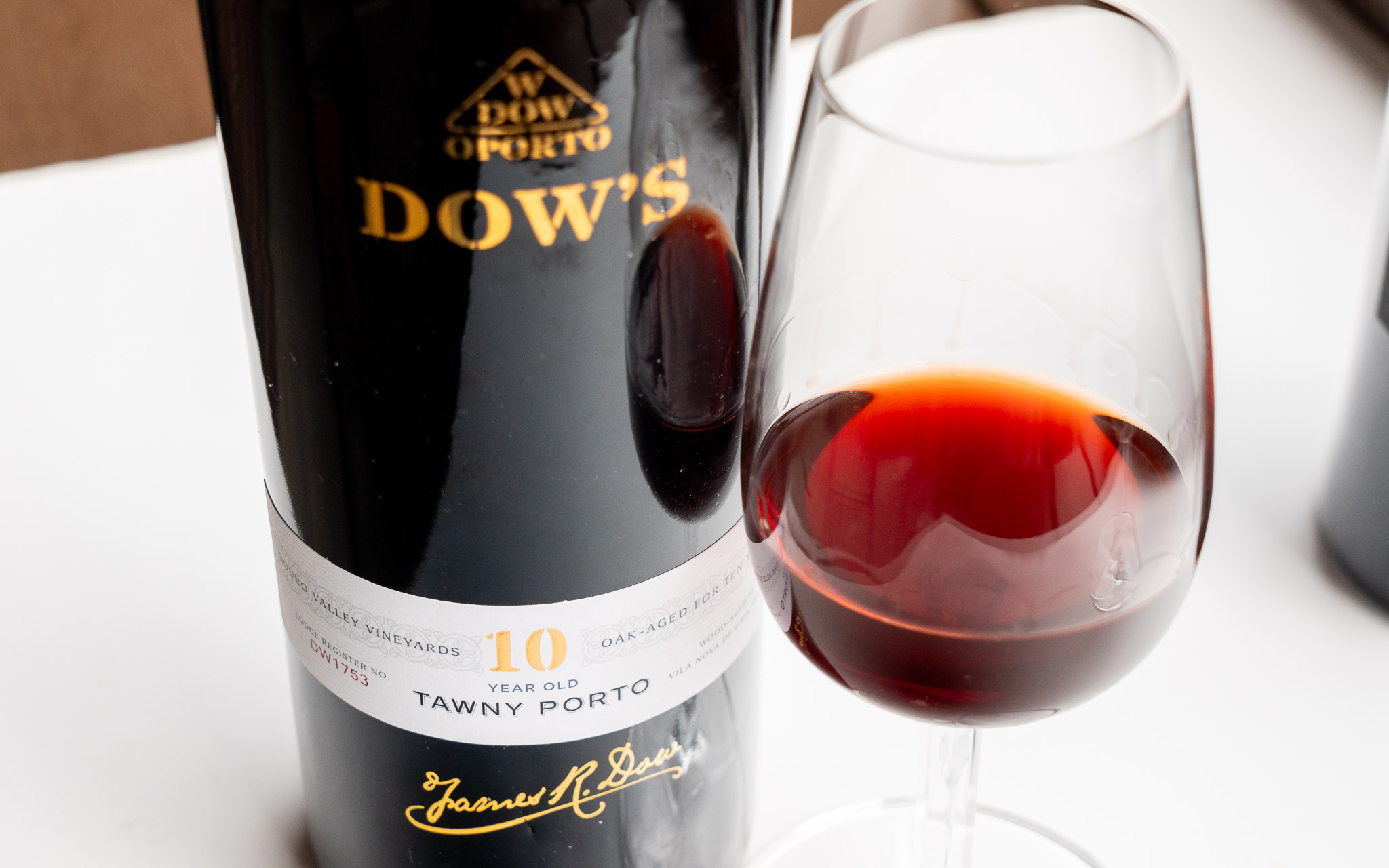
Dow’s 10 Year Tawny Porto (sample, $45 SRP) 20% abv
Eye: Medium tawny
Nose: Medium plus intensity aromas of caramel, creme brulée, pecans, subtle woody notes, hint ripe blueberries and raisins in the background.
Mouth: Medium sweet, medium plus acidity, medium minus sandy tannins, full body, high alcohol, medium plus flavor intensity, medium plus finish of caramel and dried apricots.
Observations: A very nice tawny port. One note: Port Houses have their own ideas on just how sweet to leave the finished wine. Dow’s Ports impress me as slightly less sweet than some other brands, leaving room for a bit more savoury character.

Dow’s Late Bottled Vintage (LBV) Porto 2018 ($26 locally) 19.5% abv
Eye: Deep, very deep(!) ruby
Nose: Medium plus aromas of ripe blueberries, black cherries, black plums, blueberry pie filling, leather, dried figs, tobacco
Mouth: Medium sweet, medium plus acidity, medium minus refined, very fine grained tannins, full body with silky texture, high alcohol, long finish.
Observations: If your preference is intense, deep fruit, then the ruby family of ports may be for you. This LBV port shows much of the top character of the ruby/vintage port family at an accessible price point.
Embarking on Your Port Journey
Are you curious about Port and ready to start exploring? The wines posted here represent a great place to start. While not inexpensive, they both offer an excellent look into the quality wines of these two types. As fortified wines, a typical pour is 3 oz., versus 5 oz. for a normal dry wine. Also, their fortified nature makes them more robust; they can be enjoyed for several weeks by simply capping and storing in the refrigerator. The most basic Tawny and Ruby Ports lack the intensity and key qualities of age indicated Tawny and LBV. You’re much more likely to become a port lover if you spend just a few dollars more in your initial exploration with choices like Dow’s 10 year Tawny Port or Late Bottled Vintage Port.






